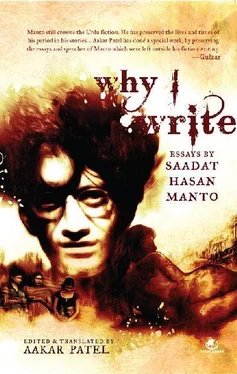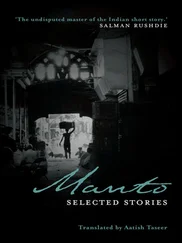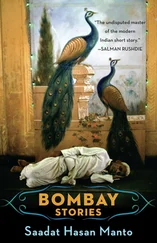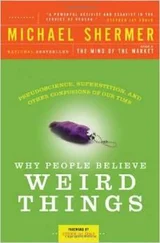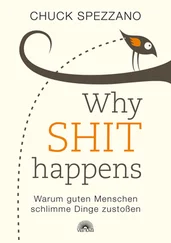‘You and Capstan?’ he exclaims, ‘Hmm, it’s sure to have something good about it, then. Let’s have a look.’
Type 11:
This one attacks not just a cigarette but your entire tin. ‘Sorry man, I’m taking it,’ he says with regret, ‘I’ve left mine at another friend’s place.’ Or he says, ‘Give me two tins. My stock’s coming tomorrow or the day after. I’ll return them…’
Type 12:
The sort of extreme freeloader, seeing whom people tighten their grip on the cigarettes in their fingers. And they throw away their half-empty packet on the ground in his sight, as if it were empty.
Type 13:
The type who’ll chat with you for some time and then, as he’s leaving, pick up the half-empty pack you had tossed away, saying: ‘I’ll take this for my boy. He loves playing with empty boxes.’
— (Originally published as Muft Noshon Ki Terah Qismein
in Talkh, Tarsh Aur Shireen , 1954)
* the brand smoked by M A Jinnah
Manto lived through the Second World War and his most productive writing years in India were between 1939–1945. This was the period when nations had converted industrial factories into armament-producing units and the world was awash with weapons. The theory of deterrence was also used, although this was a surprise because it was before the nuclear age. Manto’s response to this development was to write a farcical essay, which was published in 1942, while he was still working in Bollywood. It was only after Partition that his writing became very dark.
International relations is so complex that to understand it is tiresome. In fact one can get lost in that maze if one enters to figure it out.
I’m sure you’ve read about the threat of weapons of mass destruction at least twenty times. But tell me the truth — have you really understood how deterrence works? I don’t think so.
I’m not questioning your intelligence, mind you. It’s just that recently has the thing dawned on me and what I’ve understood about the subject can be put so simply that even a child would not be confused. Interested?
Imagine that you and I are slightly less clever than we are. It’s possible that I possess a pillow and it’s likely that at some point I thump your head with it. Now it’s possible that you in turn possess an egg, which you proceed to smash on my face. My pillow and your egg are weapons of mass destruction — you follow?
To bring about peace, we call a conference on the threat from these weapons. The result of our conference is that we agree to giving you the right to possess a pillow and me the right to possess an egg.
Both now have the material needed to retaliate in equal fashion if attacked. This ensures peace. Neither of us has the right to increase our arsenal without consulting the other, because this would threaten the peace.
After some time, however, I bring to your notice your ownership of a pen knife which could, logically, double up as a weapon.
You in turn point to the axe in my shed — using which I could sever your head with one swing. These discoveries suddenly produce in both of us strong and neighbourly yearnings for maintaining the peace. And so I get myself a pen knife and you add to your property an axe, though you don’t have a garden.
Now, just as it happens so often in international relations, things sour between us. I come over and tell you that since I’m threatened by the equilibrium between us, I should be better off getting a pistol from the market. Your response is to be alarmed and to get a pistol as well as a glittering sword.
To be safe, I get a sword and purely to ensure my security, I get a machine gun and mount it on my car.
Surely peace should break out anytime now. But then you go off to an arms dealer and buy a tank. You also get a bomb which can blow the roof of my house clean off.
Yours truly notices and gets a couple of bombs for himself. I also order (just in case) a couple of cylinders of poisonous gas. The gas can turn you and your children a pale yellow and the skin of your faces the texture of roasted brinjal.
In response you look for a gas that can make my head, my arms and my legs entirely vanish from my torso. You also buy a fighter-bomber and park it in your compound.
We have collected so much explosive material inside our homes now that it’s impossible to think of war.
Even so, we soon fight and destroy ourselves. However, this is incidental and shouldn’t be blamed on us because at least we tried so hard to keep the peace.
— (Originally published as Tahdeed-e-Asliha )
Beautiful Girls will be Harassed
Trust Manto to take up a subject as unusual as the forcible interaction between sexes — what we call eve-teasing and molestation in India — and write a long essay on it. What strikes one on reading this essay written during pre-Independence is how playful Manto was before Partition. His title is a reference to Ghalib’s couplet: “Yaar se chhed chali jaye ‘Asad*, Gar nahin vasl to hasrat hee sahi”. Manto uses the Indian word chhed, meaning to annoy. It does not have the fully negative sentiment of “molest”, and retains some of the playfulness of “tease”.
If not the ecstasy of union, then the sorrow of unrequited love. And so, till men have no access to union with women, they will continue to harass and tease women, and to molest them.
So how did all this actually begin? Who was the first man to have teased a woman? History books are silent on this for some reason. It’s possible that in some thicket of Eden’s garden, or in the shade of one of its trees, Adam began this tradition. It cannot be for nothing that he was booted out of that paradise.
But even if we were to assume that it was Adam who began this pleasant tradition, it’s not easy to figure out how it happened. His attempt could have been crude, or he must have been extremely elegant in his approach — it’s difficult for us to say which. We have little knowledge of those times.
We can’t even guess what reaction this produced in Eve and how she must have responded to the masculine overture. Many things come to my mind while imagining it. It resembles something like a scene from a nudist club in America. Adam as a white man and Eve, his madam.
If not the ecstasy of union, then the sorrow of unrequited love.
In Europe, which is living out an age of civilization and culture, there is more union and fewer sighs of unrequited love. But even so, teasing and harassment is commonly found there too.
Their women, uncovered of face and often of body, are stared and ogled at just as we stare in India at whatever bit of our women is on display. And Europeans are bolder in their approach than us. This is counter-intuitive, but the hunger for flesh cannot be sated just by having one’s fill.
As long as men are put next to women, this harassment will happen. There might come a time when women’s existence is no longer necessary for men and this will stop by itself. But not before that time is this going to end.
The other day Gandhiji wrote of the educated girls of India saying, ‘Each of these Juliets has a hundred Romeos behind her.’ At this there was such an extreme reaction in Lahore that the heavens trembled.
Ms Mumtaz Shahnawaz and other girls gave a strong response to Gandhiji. For many days, even veiled women wrote essays in Indian papers against this half-covered man. But Gandhiji did not soften his opinion. He wrote another piece, addressing boys and targeted them with his ahimsa-tipped arrows. He said to them: ‘When you walk in the bazaar, keep your gaze down. Wear a hood so that your eyes don’t light upon the faces of young girls. Thus you’ll hold on to your virtue.’
Читать дальше
